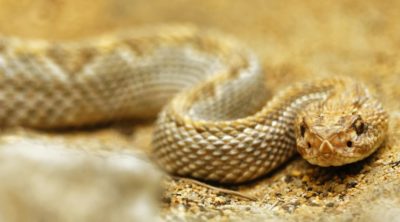
Ribbon snakes are a class of garter snakes, and are common in the United States. They are also popular as pets.
Did You Know?
Ribbon snakes are named thus due to their thin, slender bodies. They are among the most slender garter snakes. Even their heads are narrower than other garter snakes.
Ribbon snakes are a single species of garter snakes. They are known in binomial nomenclature as Thamnophis sauritus. Garter snakes are defined by the genus Thamnophis. Like all snakes, the first question about these would be whether ribbon snakes are poisonous. Fortunately, like all garter snakes, ribbon snakes are nonvenomous and quite shy. This makes them popular pets, since there are many attractive color morphs of ribbon snakes, and they don’t pose any danger to even kids.
Here’s their scientific classification.
Classification
Kingdom: Animalia
Phylum: Chordata
Subphylum: Vertebrata
Class: Reptilia
Order: Squamata
Suborder: Serpentes
Family: Colubridae
Subfamily: Natricinae
Genus: Thamnophis
Species: T. sauritus
There are four subspecies of ribbon snakes: The eastern ribbon snake (T. s. sauritus), the western ribbon snake (T. s. nitae), the northern ribbon snake (T. s. septentrionalis), and the southern ribbon snake (T. s. sackeni). The western ribbon snake is also known as the bluestripe ribbon snake, while the southern ribbon snake is also known as the peninsula ribbon snake.
Physical Description
Eastern ribbon snake
Western ribbon snake
Northern ribbon snake
Southern ribbon snake
As mentioned before, the name of ribbon snakes comes from their thin, slender bodies. However, they can be quite long, as individuals may exceed 30-35 inches in length. The average of the species, though, lies between 16-25 inches (41-64 cm). Females are a bit longer and thicker than males.
They are distinguishable due to the three lines running conspicuously along their body. The body is generally dark, though the individual shade may range from black to dark red or dark green. The color of the lines depends on the subspecies, but they are generally yellow-green (except in bluestripe or western ribbon snakes, where the stripes are light blue). The underside of their bodies is usually light.
Distribution and Habitat
Ribbon snakes are found in eastern North America, including the eastern and Midwestern USA, and Canada. Like all snakes, they are not found inside polar regions, and are present south of the Arctic Circle in Canada.
The eastern ribbon snake arguably has the largest distribution, and is found from New York to Florida, with its range extending westward up to the Mississippi river. The northern ribbon snake has the next largest territory, being found around the Great Lakes between Maine, Ontario, and Indiana. As can be guessed from its name, the southern ribbon snake is found in the southern United States, with its range extending from South Carolina into Florida. This distribution has led to its alternative name, the peninsula (referring to Florida) ribbon snake. The western ribbon snake is found on the northern Gulf coasts of Florida.
All these snakes live close to water. They are comfortable in water and frequently enter it in order to catch prey. They are found around lakes, rivers, brooks, of which there are plenty on the eastern coast of North America. However, because the proximity to water is their prime condition, they can be found in almost any kind of habitat, including forests, grasslands, scrub lands, marshes or swamps, etc., as long as it has water. They are also adept at climbing trees. They may use burrows dug by other animals for shelter, but usually prefer dense vegetation.
Diet and Predators
These snakes have quite a variable diet. The particular diet of a local population depends on the availability of various animals there, but in general, it consists of lizards, rats, frogs and toads, salamanders, fish, molluscs, such as snails and slugs, insects, etc.. Since these snakes are not very large, the size of their prey is also quite small.
In turn, these snakes are hunted by a similarly large variety of predators. Small carnivorous mammals, such as weasels and raccoons, eagles, shore birds, such as herons, king snakes, etc., all feed on ribbon snakes.
Life Cycle
These snakes hit sexual maturity at around 2 years of age. Mating occurs just before summer, mostly in May. The female gives birth to live young, but the young hatch in eggs inside the female’s body, which makes this snake ovoviviparous. An average of 12 young snakes are produced, though the number can range from 3 to 27.
These were some interesting facts about ribbon snakes. One important point to note is that if you are planning to keep one as a pet, keep a terrarium of at least 10 gallons. Also, they are docile and reluctant to bite, but they don’t like being handled, and can get very wriggly as a result. Check out this PetPonder article on the best pet reptiles for more information about reptiles that are more comfortable with physical contact and, in fact, enjoy being handled by their owner.





